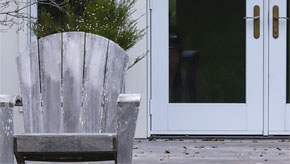Autofocus Accuracy: Fujifilm GFX100S + Fujifilm GF 35-70mm f/4.5-5.6
UPDATE Feb 27: using two Fujifilm GFX100S bodies, I have replicated my outdoor findings (repeatable at-will) using an indoor target as favorable to AF accuracy as anything can be: a Siemens chart. It doesn’t get any easier for an AF system than that. The error and variability are seen with the 35-70mm zoom, the 50/3.5 and the 63/2.8—everything. From what I can tell, the only solution to consistent sharpness is manual focus. But like a blind squirrel, the GFX100S AF system gets it spot-on sometimes and screws the pooch half the time too! What I see is poor precision (see precision and accuracy) with at best a 25% hit rate for optimal sharpness at full aperture. Compared to Sony, Nikon, Canon mirrorless it feels DSLR-grade circa 2007, which is a puzzler given on-chip PDAF pixels. So I’m guessing the AF motors lack the precision and/or the algorithm is tuned for speed instead of accuracy. When I think back, I now recall that my practice in the field had been to repeatedly invoke AF-ON when things didn’t look quite sharp at 100% and/or resort to manual focus. Maybe this has been the case all along, and by adapting to it, I kinda forgot about/ignored it. Or maybe Fujifilm has changed something? It seems to be worse the slower the max lens aperture eg the 35-70mm zoom is the worst behaved.
...
Yesterday I shot a dozen aperture series and comparisons with four different lenses on my new Fujifilm GFX100S. In each case, AF accuracy made the series untenable (not fully sharp at full aperture where focused), and comparisons were hopelessly mismatched.
I don’t recall seeing such bad AF errors with the (at least) 4 prior GFX100/GFX100S bodies that I have used. Could something have changed with the latest firmware update?
One possible and perennial favorite the world over is a “bad” camera. I find that non-credible because PDAF focusing with the software should show no variance—how could that possibly be “bad”?
Another explanation is the lens motor accuracy in the 35-70mm. But I saw errors with the other lenses also. So while the 35-70 seems more prone to error, the 50/3.5 and 30/3.5 also show variance/error.
The best explanation IMO is that the error is in fact routine and expected: a slow lens speed and its relatively deep depth of field makes it quite difficult for the camera to determine focus placement.
Am I missing some camera setting that might change matters? I have to go check on all that.
Testing with two cameras
Late today I borrowed a friend’s GFX100S. I had only a short time to test things before the light faded, but will methodically look at things again tomorrow.
Focus-test protocol: Use a foreground and background that clearly shows where focus is landing (NOT a wall). Use a real subject but one that is an ordinary challenge, nothing special (and not some special target like Siemens star). Smallest spot with AF-S, no magnification. Focus on nearby object (I used my hand), then refocus on the target (distance about 60 feet out). This serves to force a refocus from near to far each time. Confirm focus acquisition with green light/beep. Repeat 3X at each focal. Two different subjects and 3 different focal lengths (35mm, 43mm, 63mm). Check foreground and background and subject sharpness for error and consistency.
What I concluded is that both cameras show highly variable autofocus accuracy, at least as per this test protocol.
My working theory is that a slow lens speed and its depth of field makes it difficult for the camera to determine focus placement. So it stops focusing once it thinks it has things right. And that can leave the focus quite variable over a near-far zone.
I was thinking that my GFX100S was “bad” somehow, but this pair of crops shown below is from my friend’s GFX100S, which for this target did a lot worse than my GFX100S. Yet on another subject, the reverse is true. Basically both cameras show (1) poor accuracy, and (2) poor poor precision shot-to-shot. Any variance in behavior between the two bodies likely involves small differences in the exact placement of the focusing spot on the target. My sense of it is that both camera bodies are subject to similar variance/error.
Toggle to compare and see the huge variance. Focus spot was on the door handle area.

Fujifilm GFX100S + Fujifilm GF 35-70mm f/4.5-5.6 WR @ 50.8mm equiv (61.8mm)
[low-res image for bot]
Below, a Siemens star is as easy as it gets for an AF system. But the GFX100S flubs it, with only a fraction of shots hitting peak sharpness. Both frontfocus and backfocus are seen. Accuracy is far worse than it looks in that f/5.2 (wide open) has very appreciable depth of field that masks the error. This degree of AF error turns a 100MP sensor into a 24MP sensor or so. And it can be much worse than seen here.

Fujifilm GFX100S + Fujifilm GF 35-70mm f/4.5-5.6 WR @ 46.6mm equiv (56.6mm)
[low-res image for bot]



























